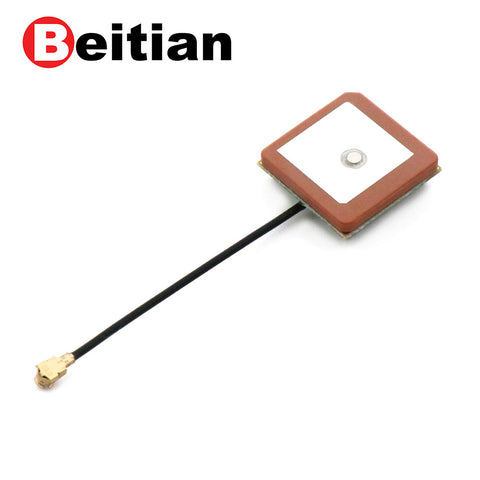
What is the function of GPS antenna?
The GPS antenna has the functions of releasing static electricity, amplifying communication signals, interfering currents, and improving the measurement accuracy of the GPS system. It also has the functions of radio FM antenna, GSM communication antenna and satellite navigation system antenna.
The signal strength is the key. The type and function of the GPS antenna. The GPS receives satellite signals for positioning and navigation, and the antenna must be used to receive satellite signals. Moreover, the accuracy of GPS positioning and the stability of satellite signals are closely related to the antenna. The placement of the antenna and its own quality will affect the effect of receiving satellite signals for navigation.

The GPS satellite signal is divided into L1 and L2, and the operating frequencies are 1575.42MHZ and 1228MHZ respectively, among which L1 is an open civilian signal, and the signal is circularly polarized. The signal strength is about 166-DBM, which is a relatively weak signal. In addition, whether it is a car navigator or a handheld terminal, the complex surrounding environment determines that if the GPS can accurately locate and navigate customers, it is indispensable to prepare a special antenna for the navigation system. .
Let's briefly understand the GPS antenna from the type. First, the GPS antenna is divided into vertical polarization and circular polarization in terms of polarization. With the current professional technology, there are two polarization methods for receiving antennas: one is linear polarization and the other is circular polarization. Since the signal reception effect of linear polarization is not as good as that of circular polarization, most GPS antennas will use circular polarization.
Secondly, GPS antennas are divided into internal antennas and external antennas in terms of antenna placement. The installation position of the antenna is also very critical. Most of the early GPS car navigators and handheld terminals used flip-out antennas. At this time, the antenna was basically isolated from the internal structure of the entire device, and the electromagnetic interference signal basically did not exist, and the satellite signal reception effect was good. At this stage, the volume of the navigation server is getting smaller and smaller, and the functions are relatively highly integrated, so most of the GPS antennas are built-in. At this time, the antenna must be on top of all metal components, and the body shell must be electroplated and kept well grounded to avoid interference signal sources, such as CPU, memory, SD card, crystal oscillator circuit and other internal structural components. The size and shape of the receiving antenna are also very important. After all, these characteristics determine whether the antenna can obtain weak GPS signals and the stability of satellite signal reception.
In addition, due to special work requirements, GPS antennas also have some different types of products, such as single-stage, dipole, helical, four-arm helical, and micro-antennas.

Since all car navigator products now use built-in ceramic receiving antennas, we will focus on introducing the composition of the built-in receiving antenna and the characteristics of receiving satellite signals. The GPS antenna is composed of two components: the receiving antenna and the preamplifier. The function of the GPS receiving antenna is to convert the kinetic energy of the electromagnetic field of the wireless communication signal of the communication satellite into the amount of current that can be ingested and used by the electronic components of the receiver. Most of the built-in GPS antennas are right-handed polarized ceramic media, and its components are: ceramic antenna, low-noise signal control module, cable, and connector.
1. Among them, ceramic antenna is also called active antenna and material antenna, which is the core technology of GPS antenna. The signal understanding ability of a GPS antenna depends largely on how well the pottery is seasoned.
2. The low-noise signal module, also known as LNA, is the part that amplifies and filters the signal. The selection of its electronic components is also very important, otherwise it will use the reflection loss of a large GPS signal and cause too much noise.


